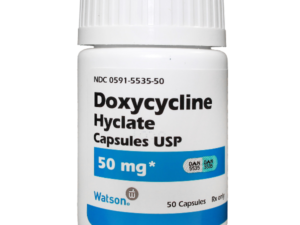Description
Carbamates: A Versatile Chemical Family Shaping Agriculture, Medicine, and Beyond
Carbamates represent a diverse and fascinating class of organic compounds with a wide array of applications, impacting everything from agriculture and medicine to polymer chemistry and beyond. Their versatility stems from their unique chemical structure and reactivity, allowing them to interact with biological systems and undergo various chemical transformations.
Understanding the Carbamate Structure
At its core, a carbamate is an ester of carbamic acid (NH₂COOH). Structurally defined, it features an alkyl or aryl group attached to the oxygen of the ester and a nitrogen atom with two substituents (hydrogen or organic groups). This combination of ester and amine functionalities provides carbamates with a unique chemical personality.
A Legacy in Agriculture: Carbamate Insecticides
Perhaps the most well-known application of carbamates lies in the field of agriculture, where they have been extensively used as insecticides. Carbamate insecticides, like carbaryl (Sevin) and aldicarb (Temik), are cholinesterase inhibitors. They work by disrupting the nervous system of insects by binding to acetylcholinesterase, an enzyme crucial for neurotransmitter breakdown. This blockage leads to the buildup of acetylcholine, causing overstimulation, paralysis, and ultimately, the death of the insect.
While effective at controlling insect populations, the use of carbamate insecticides has drawn scrutiny due to their potential toxicity to non-target organisms, including humans and beneficial insects like bees. Strict regulations and responsible application practices are crucial to minimize their environmental impact. Moreover, the development of insect resistance to carbamates has spurred research into alternative pest control strategies.
Carbamates in Medicine: From Muscle Relaxants to Cancer Therapies
Beyond agriculture, carbamates play a significant role in medicine. They are used in the synthesis of various pharmaceuticals, including:
- Muscle Relaxants: Meprobamate (Miltown) was one of the first widely prescribed tranquilizers and muscle relaxants. While its use has decreased due to the availability of safer alternatives, it highlights the early applications of carbamates in treating anxiety and muscle spasms.
- Anticholinesterases: Pyridostigmine (Mestinon), a carbamate derivative, is used to treat myasthenia gravis, an autoimmune disorder affecting neuromuscular transmission. By inhibiting the breakdown of acetylcholine, pyridostigmine helps prolong the action of this neurotransmitter at the neuromuscular junction, improving muscle strength.
- Cancer Therapies: Research exploring carbamates for cancer treatment is ongoing. Certain carbamate derivatives have shown promise as inhibitors of histone deacetylase (HDACs), enzymes involved in gene regulation. HDAC inhibitors can alter gene expression in cancer cells, potentially leading to cell death or growth arrest.
- Local Anesthetics: Certain local anesthetics, like mepivacaine, contain carbamate linkages within their structure. This structural feature influences the pharmacological properties and metabolic pathways of the anesthetic.
Beyond the Bioactive: Carbamates in Polymer Chemistry and Protective Groups
The utility of carbamates extends beyond their biological activity. Their chemical properties make them valuable in other areas:
- Polyurethanes: While technically containing urethane linkages (a closely related structure), polyurethanes are synthesized through reactions involving isocyanates and polyols. These polymers are widely used in foams, coatings, adhesives, and elastomers.
- Protective Groups in Organic Synthesis: In organic chemistry, carbamates like Boc (tert-butyloxycarbonyl) and Fmoc (9-fluorenylmethyloxycarbonyl) are frequently used as protecting groups for amines. These groups selectively protect the amine functionality during chemical reactions, preventing unwanted side reactions and allowing for controlled synthesis of complex molecules.
Looking Ahead: The Future of Carbamate Research
Research into carbamates continues to explore new applications and improve existing technologies. This includes:
- Developing more selective and environmentally friendly carbamate pesticides.
- Designing novel carbamate-based drugs with improved efficacy and reduced side effects.
- Exploring the potential of carbamates in materials science and polymer chemistry.
- Investigating the use of carbamates in CO2 capture and utilization.
In conclusion, carbamates represent a versatile class of organic compounds with a rich history and a promising future. From their impact on agriculture and medicine to their role in polymer chemistry and materials science, they continue to shape various aspects of our lives. As research progresses, we can expect to see even more innovative applications of these fascinating molecules in the years to come.









Reviews
There are no reviews yet.